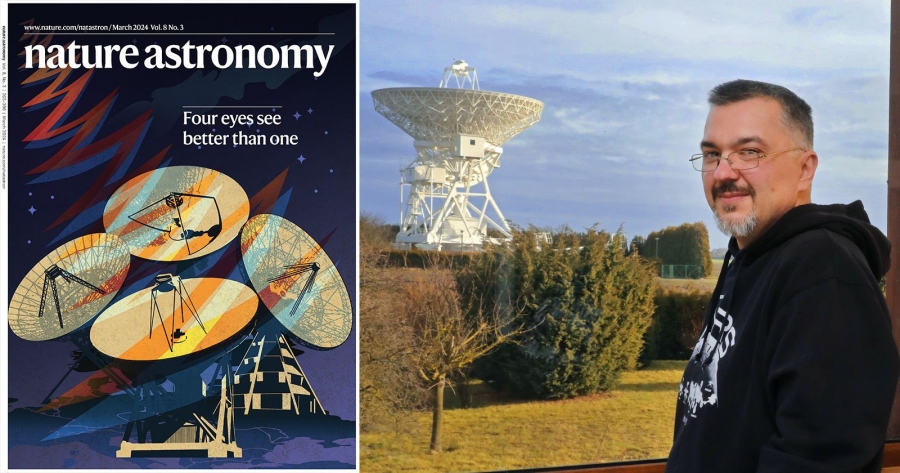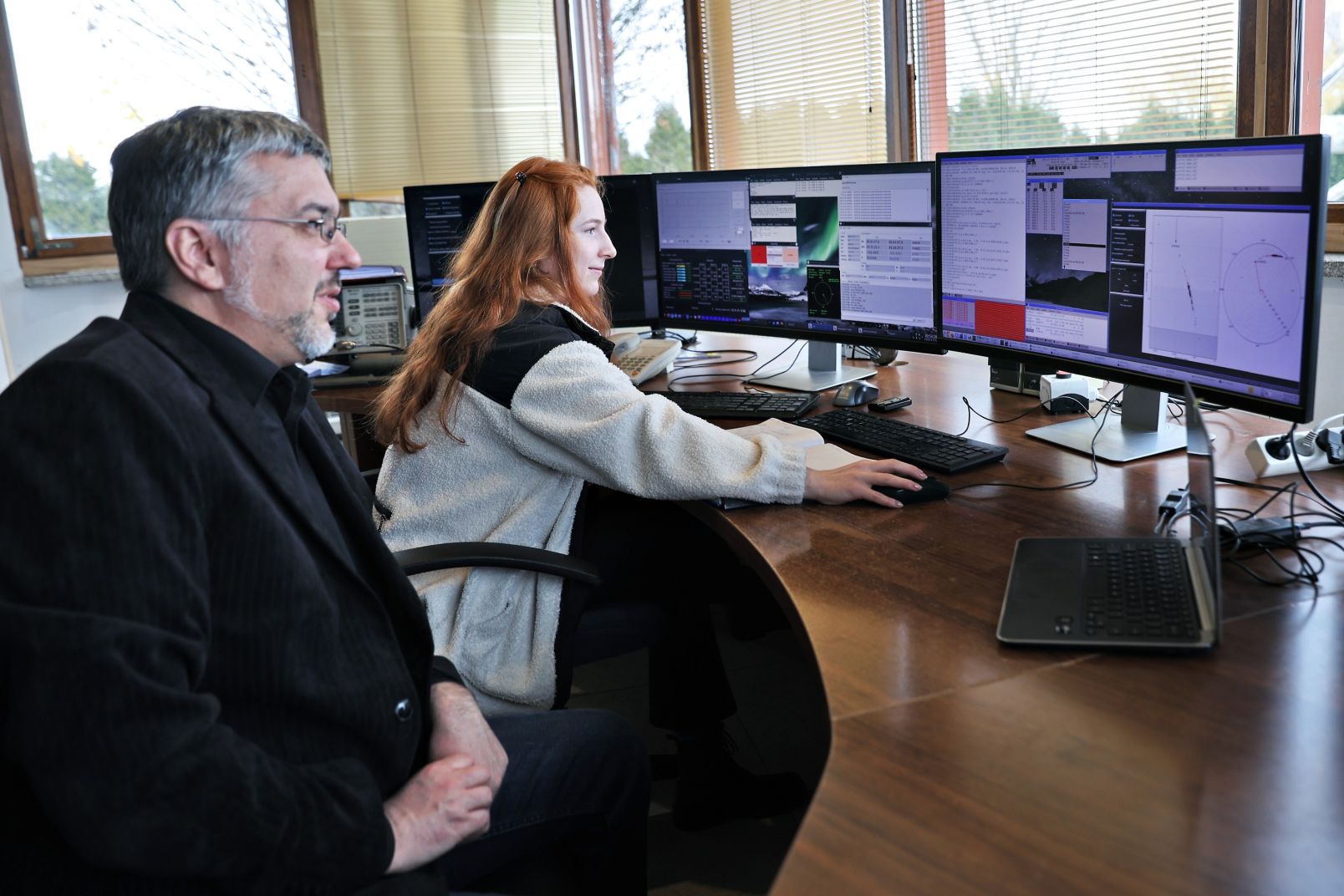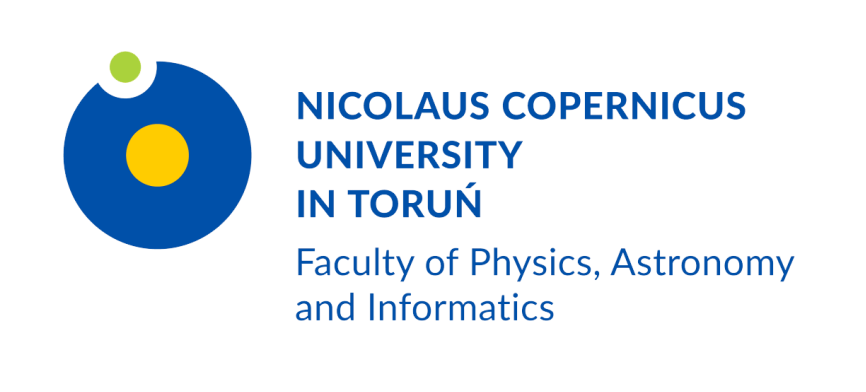
The RT4 radiotelescope from Piwnice near Toruń has been featured on the cover of Nature Astronomy, one of the world's most important research journals. This is linked to an article by astronomers from the NCU that appeared in this issue.
The latest issue of Nature Astronomy features in the foreground an image of the 32-metre radiotelescope, the most important instrument at the NCU Astronomical Observatory in Piwnice near Toruń and the largest antenna of its kind in Poland. Three other radio telescopes were also featured on the cover: from Onsala, Westerbork and Stockert.
The illustration is related to an article that appeared in the issue: "A link between repeating and non-repeating fast radio bursts through their energy distributions". Its co-authors are dr Marcin Gawronski, dr Paweł Wolak and mgr Weronika Puchalska from the Institute of Astronomy at the NCU Faculty of Physics, Astronomy and Informatics. The editors of the journal felt that the research and results described in it are so important and unique that they decided to also dedicate the cover to them.

fot. Andrzej Romański
Astronomical cooperation
This paper presents the results of research into so-called Fast Radio Bursts (FRBs), the phenomenon that has amazed astrophysicists for more than fifteen years. These are millisecond-long bursts of radiation recorded on radio waves. They are extremely powerful – the energy released in such a short period of time can be even greater than that produced by the Sun in weeks. By April 2020, all the bursts that astronomers had managed to observe came from cosmological distances numbering in the hundreds of millions of light years.

fot. Andrzej Romański
This is an excellent example of collaboration between researchers from Poland, Sweden, the Netherlands and Germany. They jointly observed a source previously discovered by the Canadian CHIME radio telescope in the Bull constellation. It was designated as FRB 20201124A. The object is at a distance of 1.3 billion light years and is located in a galaxy similar in structure and size to our Milky Way.
– This was the longest observational project dedicated to just one FRB object, from which many phenomena were recorded. Over a period of several weeks, the source was tracked for up to 12 hours a day, simultaneously by four radio telescopes at different frequencies, explains dr Marcin Gawronski. – A total of 46 bright bursts were observed, each lasting a single millisecond.
Surprising results
The data obtained by the international group of researchers are very exciting. It should be explained beforehand that FRB phenomena in general are single-bursts i.e. radiotelescopes record a single burst with unique properties. These are the so-called classical FRBs.
Very few objects emit multiple bursts – for a long time it has been speculated, although it was only a suspicion, that this is in fact the case for all FRB sources, but we are only able to observe the brightest of them, says dr Gawronski. – Through our collaborative research, we have been able to gather a database that seems to confirm such a connection. This could mean that if we are patient enough and spend enough time following the selected FRB object, we should register further phenomena from it.
The researchers also found that there may be different physical processes or different emission regions producing FRBs in the same object. The research is still ongoing and, as the astronomers point out, is extremely promising, with further publications with unique results in the pipeline.

 Grudziądzka 5, 87-100 Toruń
Grudziądzka 5, 87-100 Toruń